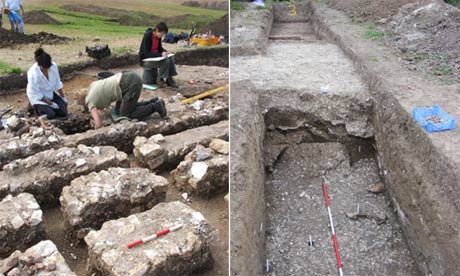Ancient graffiti (in red) is covered by tourists' markings inside Rome's Colosseum.
A facelift of the Colosseum in Rome that began last fall has revealed centuries of graffiti. Removing the accumulated grime and calcification, experts discovered layers of inscriptions on the section of a wall seen here—designs in red and faded gray from antiquity, and lettering in black left by visitors in modern times.
Built in the first century, the Colosseum may have held crowds as large as 50,000 people. Its numbered entrances and covered passages were designed to get spectators in and out quickly and to separate the high and mighty from the hoi polloi. (Read about Rome's border walls in National Geographic Magazine.)
The wall in this picture flanked a passage that led to an upper tier. There, women, children, and slaves perched in the cheap seats to watch the bloody spectacle of gladiators and wild beasts battling for their lives on the arena floor 60 feet (18 meters) below.
Read the rest of this article...


















